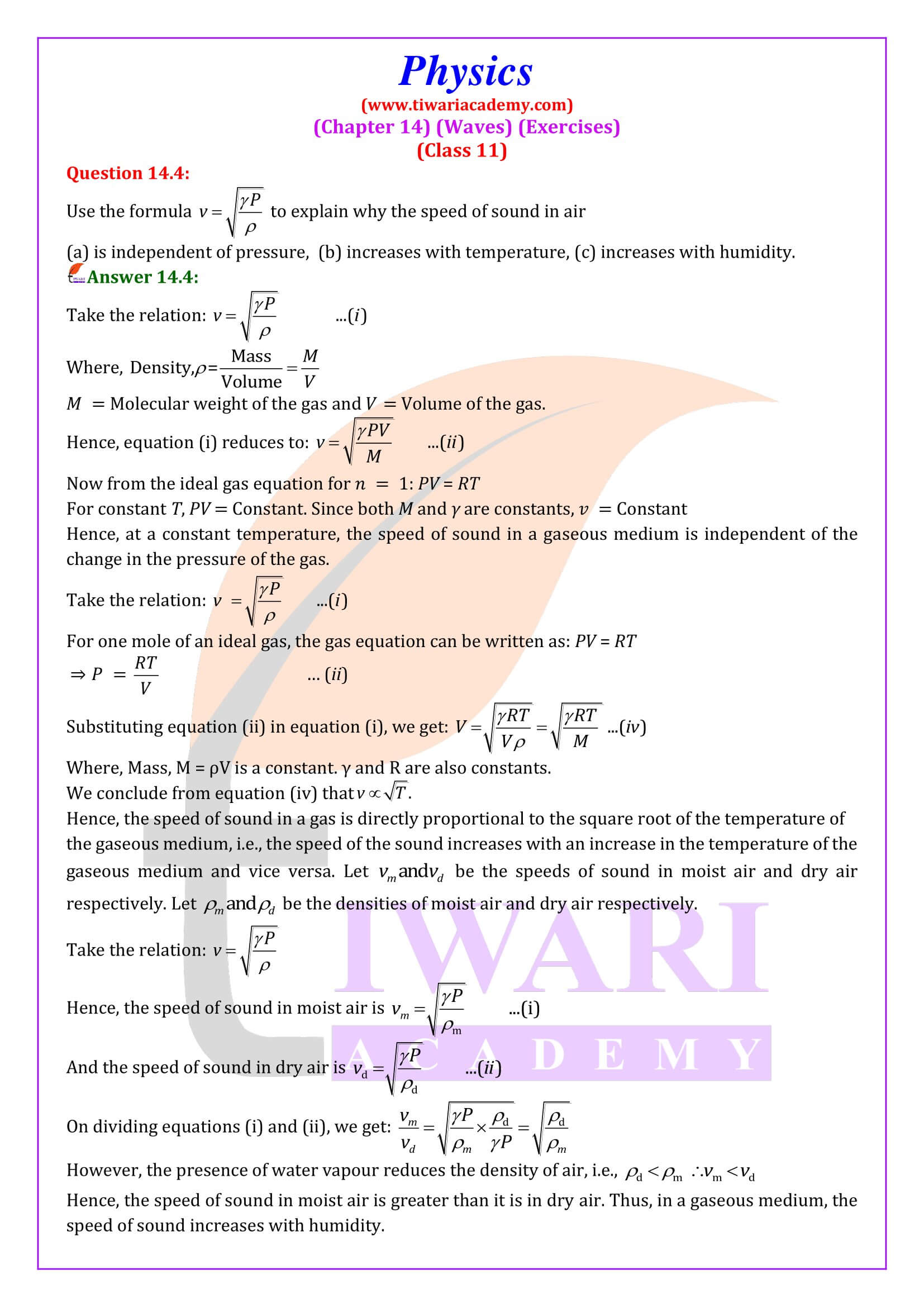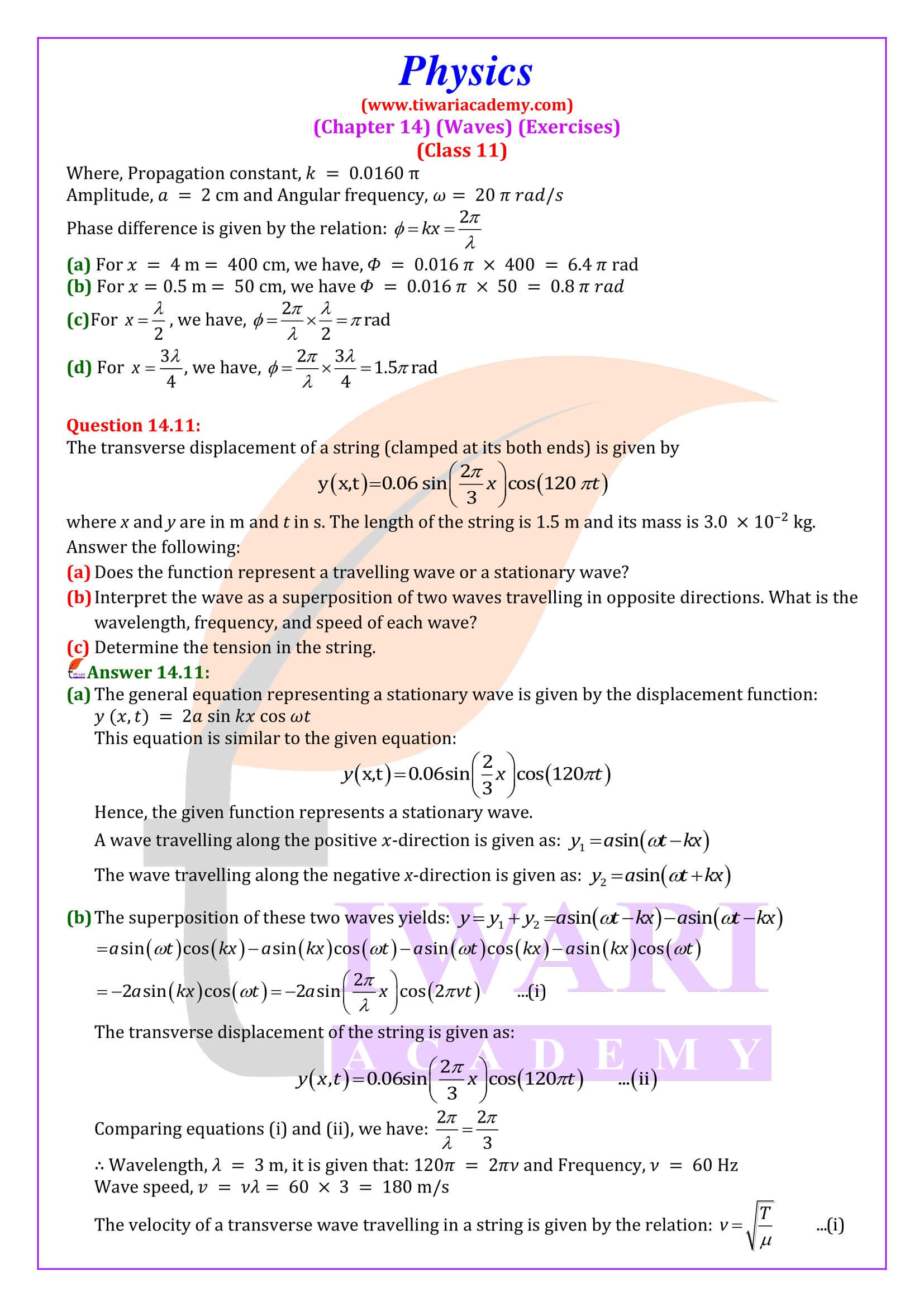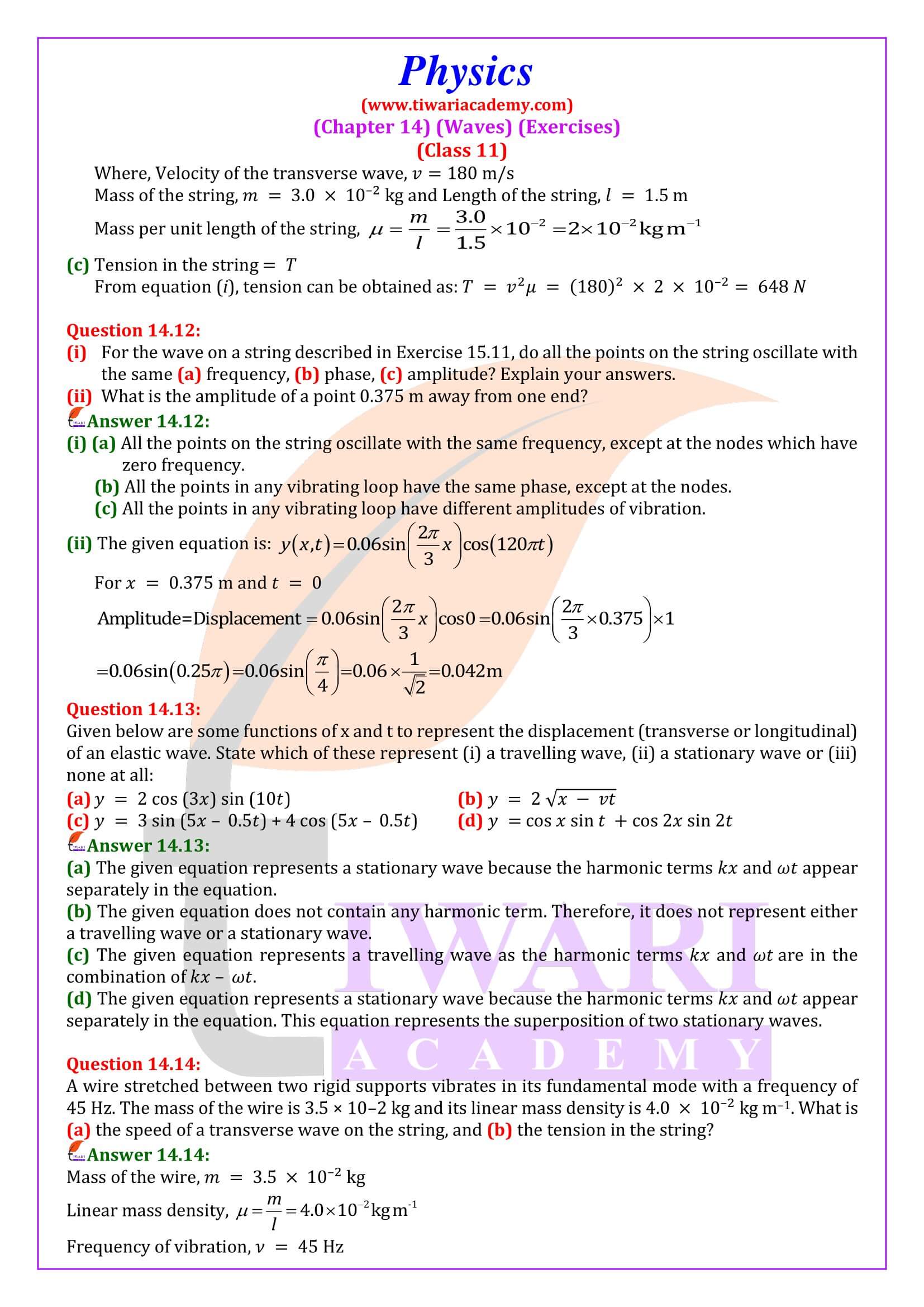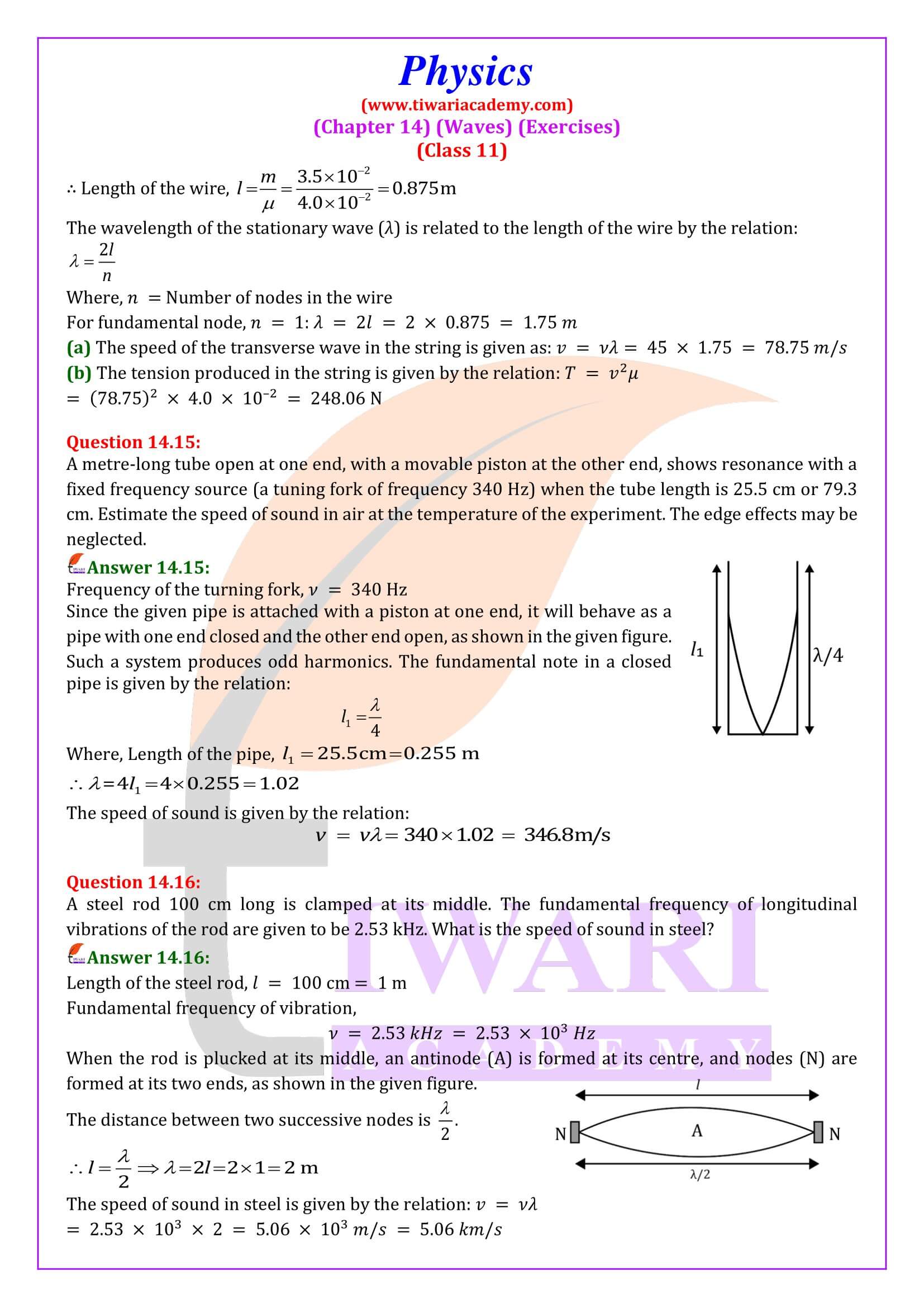NCERT Solutions for Class 11 Physics Chapter 14 Waves in Hindi and English Medium updated for new academic session 2025-26 with MCQ and Extra question answers. Remember that understanding concepts and building a strong foundation is more important than rote memorization. Approach your studies with curiosity and a genuine interest in learning, and you’ll find that mastering the important topics becomes an achievable goal.
Class 11 Physics Chapter 14 MCQ
With the increase in temperature, the frequency of the sound from an organ pie
String is in fundamental mode of vibration then velocity is directly proposal to
To demonstrate the phenomenon of beats we need
When a compression is incident on rigid wall it is reflected as
Longitudinal and Transverse Waves
A wave is a disturbance in a medium that transmits energy without causing network problems or the effects of water particle movement. Examples are elastic deformation, pressure changes, electric or magnetic force, electric potential or temperature changes.
- Shear wave: A wave in which the medium moves at an angle to the direction of the wave. Examples of transverse waves are water waves (ripples of gravitational waves, no sound passing through water), light waves, seismic waves, string instruments, and torsion waves.
- Longitudinal waves: The movement of the particles in a longitudinal wave in the medium is in the same dimension as the direction of the movement of the wave. Examples of longitudinal waves are acoustic waves, P-type seismic waves and compression waves.
Class 11 Physics Chapter 14 Multiple Choice Questions
A resonating column of air contains
Energy is not carried by
The frequency of the note produced by plucking a given string increases as
Loudness of a note of sound is
Principle of superposition
When two or more waves propagate in the same medium, they are forced to interact. They retain their wavy properties when combined with each other, but usually the resulting wave is not the same as two separate waves. The principle of superposition helps us to describe the resulting wave or motion produced when two or more waves combine. The image below shows two waves which create a certain displacement in the particles of a given medium.
Class 11 Physics chapter 14 – The Doppler Effect
In the everyday experience described above, the frequency of the train whistle varies as the train approaches and then leaves the station. When someone approaches a stationary sound source at high speed. The pitch of the source sound seems to be higher than its actual pitch. As the observer moves away from the sound source, the observed frequency appears to be lower than the actual frequency of the source sound. This observed frequency change related to motion is called the Doppler Effect.
It’s a wave phenomenon, and it doesn’t just apply to sound waves. It works with all waves. Three possible scenarios must be analyzed when studying the Doppler Effect:
- The observer is stationary, but the source is moving.
- The observer is moving, but the source is stationary.
- The source and the observer move.
How to download the NCERT Class 11 Physics Chapter 14 Solutions?
Students can download the NCERT solutions for free from the Tiwari Academy website. They can use it online from the Tiwari Academy app without any login or password. Class 11 Physics chapter 14 NCERT solutions will prove to be the best teaching source for students as they feature exercises designed to prepare students for the exam. By regularly practicing the content of the NCERT solution, students will develop ideas on how to answer any question on the school exams.
What are the main topics covered in Chapter 14 of class 11 Physics?
The main topics covered in chapter 14 are properties of waves in different media and graphic representation of waves and their properties. It also covers the comparison between waves, speed of sound and harmonic movement. Students of class 11 Physics can learn here about resonance between waves and calculation along with the movement and oscillation speed.
Is chapter 14 of 11th Physics NCERT difficult?
No, class 11 Physics chapter 14 is not difficult, but to get good result in the exams, you have to be well prepared. To benefit from chapter 14, it is important that students read all chapters and mark all important areas for easier reference when needed. They should also develop the habit of taking notes on their own in order to remember all the concepts and ideas presented in chapter 14. Finally, it goes without saying that students must master the NCERT solution and practice all the exercises given. By practicing these simple steps, they are sure to get good marks in school tests and final exams.











